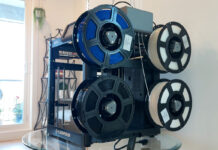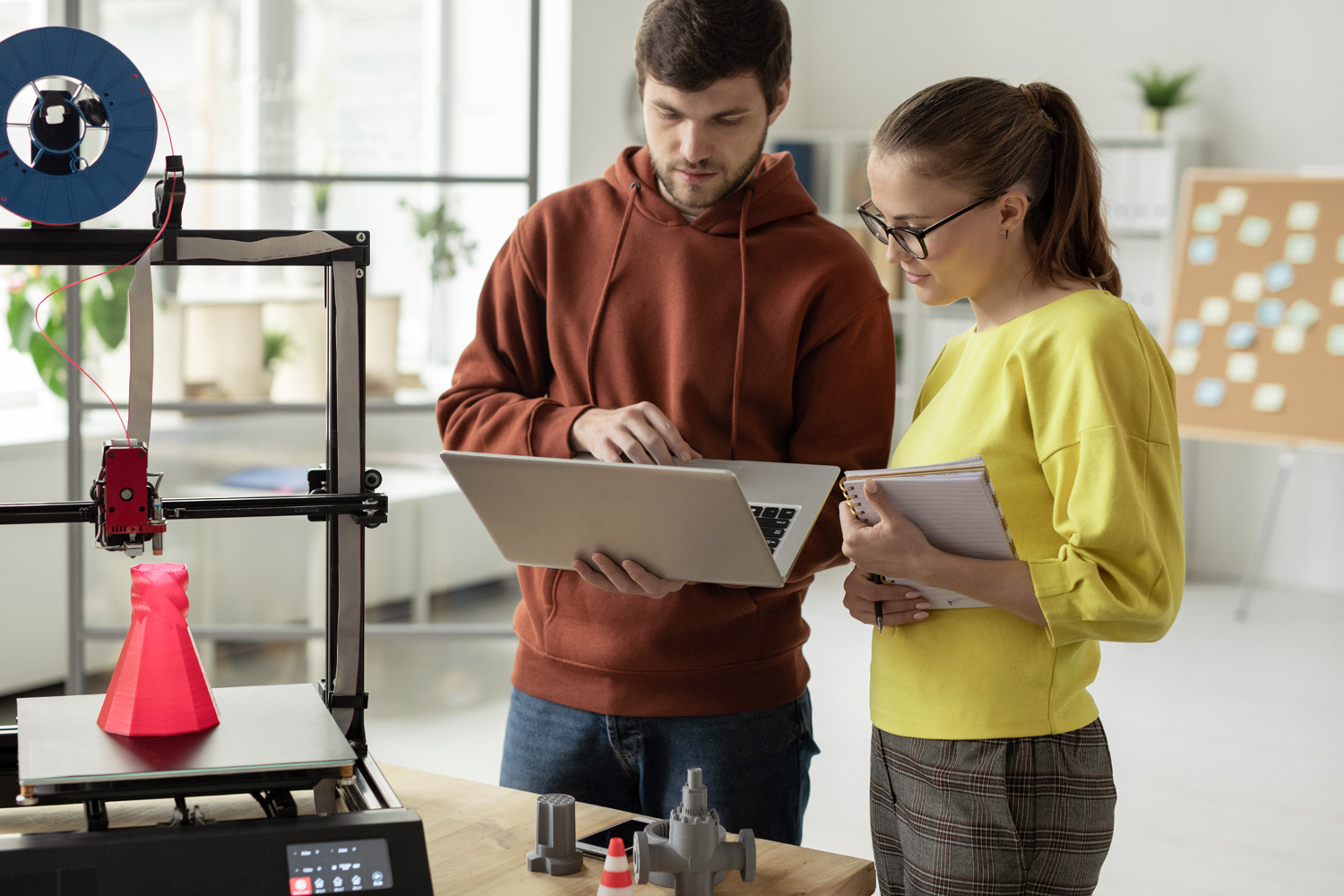
If you are interested in making your own objects, whether for fun, education, or business, you might have heard of 3D printing. 3D printers, a technology that allows you to bring digital models to life using various materials and techniques, can be both a rewarding hobby and a valuable innovation tool. However, 3D printing can also be confusing and overwhelming, especially if you are new to it. Whether you are a beginner or an expert, a hobbyist or a professional, a student or a teacher, this guide will help you discover the amazing world of 3D printing.
Table of Contents
- What can I use a 3D printer to do?
- How does a 3D printer work?
- How easy is it to learn how to use a 3D printer?
- Different types of 3D printers
- How do I choose the right 3D printer for my needs?
- How much space do I need to use a 3D printer?
What can a 3D printer do?
A 3D printer is a device that can create physical objects from digital models. It works by depositing layers of material, such as plastic, metal, or resin, on top of each other, following the shape and design of the model. 3D printers can create a variety of objects, from simple shapes and figurines to complex structures and functional parts. Some examples of what you can make with a 3D printer are:
- Jewelry and accessories
- Sculptures and figurines
- Tools and custom parts
- Home decor
- Toys and games
- Educational models
- Medical devices and implants
- Customized gifts and souvenirs
The capabilities of a 3D printer are vast and varied. In the realm of prototyping, it allows designers and engineers to bring their concepts to life swiftly and efficiently. In the medical field, 3D printers are used to create custom prosthetics and anatomical models for surgical planning. For hobbyists and educators, it offers a hands-on approach to learning and creativity, enabling the production of everything from toys to educational models. The scope of what can be created is continually expanding, limited only by the imagination and the technical specifications of the printer.
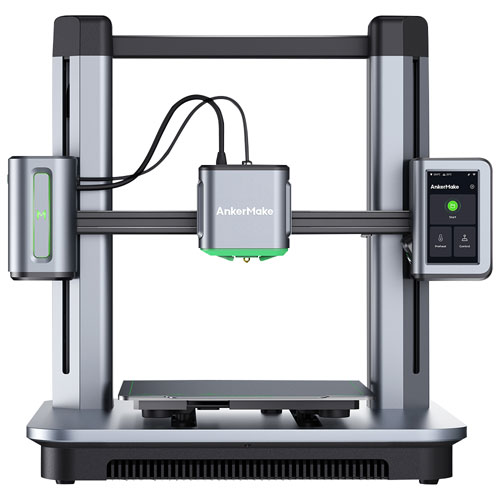
The possibilities are endless, as long as you have a digital 3D model of what you want to print. You can either create your own 3D models using software or download them from online platforms and communities.
How does a 3D printer work?
A 3D printer creates objects by adding material layer by layer. This process begins with a digital 3D model, which is typically designed using computer-aided design (CAD) software or obtained from a 3D scanner. The printer then translates this model into a series of thin, horizontal cross-sections—essentially, a stack of 2D images. During printing, the machine dispenses material, commonly a type of plastic or resin, through a heated nozzle and precisely lays down these materials, one layer at a time, onto a build platform. Each layer solidifies as it cools or is cured by ultraviolet light, gradually building up from the bottom to form the complete, three-dimensional object. This method allows for intricate designs and complex geometries.
What can I use a 3D printer to do?
Owning a 3D printer can be a game-changer for several reasons. It allows for unparalleled customization in creating personal or professional items. For small businesses, it offers a cost-effective way to produce prototypes or products without the need for large-scale manufacturing processes. In educational settings, it enhances learning by providing a tangible way to explore design, engineering, and technology. Additionally, for hobbyists, it opens up a new world of creativity and innovation.
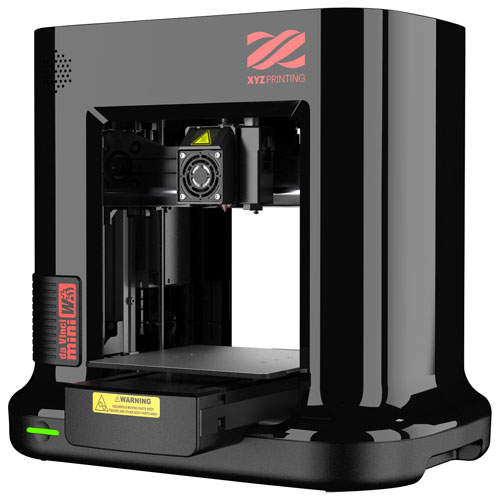
Different types of 3D printers
There are two primary types of 3D printers that cater to diverse preferences and applications: Filament 3D Printers and Resin 3D Printers. These printers are distinguished by the materials they use to bring your creations to life.
Filament 3D Printers:
For those seeking versatility in their 3D printing endeavors, Filament 3D printers stand out. Operating on a filament-based system, these printers melt a plastic filament layer by layer, allowing you to craft a broad range of objects. Whether you’re a hobbyist working on creative projects, a prototyper bringing concepts to life, or an enthusiast crafting functional parts, Filament 3D Printers offer a diverse range of applications. You’ll explore different models within this category, each with unique features and specifications tailored to meet your varied needs.
Resin 3D Printers:
Intricacy and precision define the realm of Resin 3D printers. These printers employ a liquid resin that is cured layer by layer using ultraviolet light. Renowned for producing high-resolution prints with intricate details, these printers excel in applications such as crafting highly-detailed jewelry, sculptures, or dental models. You’ll find various Resin 3D printer models, each offering distinct capabilities and functionalities.
How easy is it to learn how to use a 3D printer?
Learning how to use a 3D printer is not very difficult, but it does require some patience and practice. You will need to familiarize yourself with the basic components and functions of a 3D printer, such as the extruder, the nozzle, the bed, the filament, and the settings. You will also need to learn how to prepare your 3D models for printing, using software called slicers, which convert your models into instructions for the printer. You will also need to learn how to troubleshoot and maintain your 3D printer, such as cleaning the nozzle, leveling the bed, and replacing the filament.
Fortunately, there are many resources and tutorials available online that can help you get started and improve your 3D printing skills. You can also find online forums and groups where you can ask questions and get advice from other 3D printing users. Additionally, some 3D printers are more beginner-friendly than others, offering features such as easy setup, automatic calibration, touch screen interface, and pre-loaded models. You can choose a 3D printer that suits your level of experience and comfort.
How do I choose the right 3D printer for my needs?
Choosing the right 3D printer for your needs depends on several factors, such as your budget, your purpose, your space, and your preferences. Here are some of the main aspects to consider when shopping for a 3D printer:
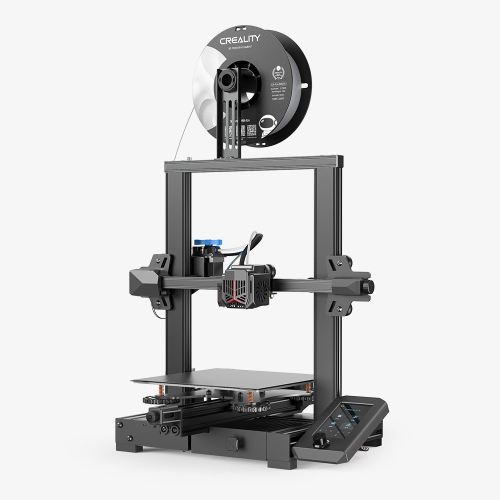
Price: 3D printers can range from a few hundred to several thousand dollars, depending on the quality, features, and performance. You should set a realistic budget and look for a 3D printer that offers the best value for your money.
Size: 3D printers come in different sizes, from small and compact, to large and bulky. You should consider how much space you have in your office or home, and how big you want your printed objects to be. The size of the 3D printer determines the size of the printing area, also known as the build volume, which limits the dimensions of your models.
Speed: 3D printing can be a slow process, taking from a few minutes to several hours, depending on the complexity and size of your model. You should consider how fast you want your 3D printer to work, and how much time you are willing to wait for your prints. The speed of the 3D printer is affected by factors such as the nozzle diameter, the layer height, the temperature, and the movement speed.
Resolution: 3D printing resolution refers to the level of detail and smoothness of your printed objects. The higher the resolution, the finer and more accurate your prints will be. The resolution of the 3D printer is measured by the layer height, which is the thickness of each layer of material that is deposited. The lower the layer height, the higher the resolution. However, higher resolution also means longer printing time and more material consumption.
Material: 3D printers can use different types of materials, such as plastic, metal, resin, wood, and more. Each material has its own properties, advantages, and disadvantages, such as strength, flexibility, durability, cost, and appearance. You should consider what kind of material you want to print with, and what kind of objects you want to make. You should also check the compatibility of the material with your 3D printer, as some 3D printers can only use specific materials or brands.
Reliability: 3D printing can be a frustrating experience if your 3D printer is prone to errors, jams, clogs, or failures. You should look for a 3D printer that is reliable and consistent, and that can produce high-quality prints without much hassle. You should also check the warranty and customer service of the 3D printer; in case you need any support or repairs.
Features: 3D printers can have different features that can enhance your 3D printing experience, such as dual extruders, heated beds, auto-leveling, Wi-Fi connectivity, camera monitoring, and more. You should consider what features are important to you, and what features are compatible with your 3D printer. Some features may require additional accessories or upgrades, which can increase the cost and complexity of your 3D printer.
You do not need a special computer to do 3D printing, but you do need a computer that can run the software and programs that are required for 3D printing. You will need a computer that can:
- Create or edit 3D models, using software such as Blender, SketchUp, Tinkercad, or Fusion 360.
- Slice your 3D models, using software such as Cura, Simplify3D, or Slic3r, which convert your models into instructions for the 3D printer.
The necessary specifications of your computer will depend on the complexity and size of your 3D models, and the speed and quality of your 3D printing. Generally, you will need a computer that has:
- A decent processor, such as an Intel Core i3 or higher, or an AMD Ryzen 3 or higher.
- A sufficient amount of RAM, such as 8 GB or more.
- A good graphics card, such as an NVIDIA GeForce GTX 1050 or higher, or an AMD Radeon RX 560 or higher.
- Enough storage space, such as 128 GB or more.
- A compatible operating system, such as Windows, Mac OS, or Linux.
- A reliable USB port or Wi-Fi connection, to connect to your 3D printer.
How much space do I need to use a 3D printer?

The amount of space you need to use a 3D printer depends on the size and shape of your 3D printer, as well as the accessories and tools you need for 3D printing. As a general rule, you should allocate at least 1 square meter of space for your 3D printer including its accessories, and adjust it according to your specific needs and preferences.
You should consider the following factors when choosing a location for your 3D printer:
Measurement: The dimensions of your 3D printer, including the height, width, depth, and weight. You should measure your 3D printer and compare it with the available space in your office, making sure that it fits comfortably and securely. You should also leave some extra space around your 3D printer, to allow for ventilation, movement, and maintenance.
Power supply: you should place your 3D printer near a power outlet and use a surge protector or a UPS to protect it from power fluctuations. You should also check the type and length of the cable or the wireless connection that your 3D printer uses, and make sure that it reaches your computer or your network.
Noise and temperature: You should place your 3D printer in a location that is not too noisy or too hot, to avoid disturbing yourself and others, and to prevent overheating or damage to your 3D printer. You should also avoid placing your 3D printer near windows, fans, or air conditioners, as they can affect the airflow and the quality of your prints.
You should also have a dedicated space for storing and organizing your 3D printing materials, such as filaments, resins, spools, and cartridges, as well as your 3D printing tools, such as spatulas, tweezers, scissors, and cleaners. You should keep your materials and tools in a dry, cool, and dark place, away from direct sunlight, heat, and moisture, to preserve their quality and lifespan. You should also label and sort your materials and tools, to make them easy to find and use.
This guide should help you get started on your 3D printing journey. It’s a fascinating and fun technology that can open up a world of possibilities for you. Additionally, if you’re considering purchasing a printer, be sure to check out our Printer Buying Guide for insights into selecting the right machine for your needs. Best Buy has a wide selection of different types of printers, ensuring you can find the perfect match for your preferences and requirements.
Take the next step
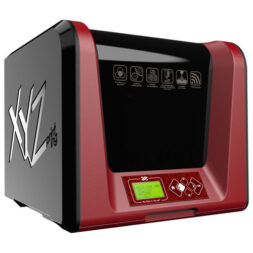
Whether you want to make your own jewelry, art, tools, toys, or anything else, 3D printers can help you turn your ideas into reality. 3D printing can also help you learn new skills, express your creativity, and join a community of like-minded people. 3D printing is not only a hobby, but also a tool for innovation and empowerment.








